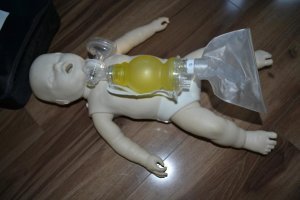Lightning strikes are considered medical emergencies due to their potentially fatal damages to the cardiac, respiratory and nervous systems. Lightning strikes are not uncommon and in fact belong to the top five weather-related emergencies. Most lightning strikes occur while doing recreational activities in the outdoors such as, playing sports, swimming, boating, fishing and being in an open field.
What are the Different Ways Lightning Strikes People?

Although it cannot always be certain how a person has been struck by a lightning. Most people think that direct strike is the only way to be injured from a lightning strike, however, there several other ways.
- Direct Strike
- Lightning directly strikes a person
- Victim becomes part of main lightning discharge where current passes
- Usually occurs in open areas
- Not very common but possibly most fatal
- Contact Strike
- Indirect lightning strike by touching an object that has been struck
- Ground Strike or Ground Current
- Lightning strikes the ground and current transmits as a form of circular wave from the direct spot
- Most common injury and cause of death
- Side Flash or Side Splash
- Lightning strikes a taller object but part of the current jumps the victim, especially if within a foot or two away
- Conduction
- Current from lightning strike can go long distances through wires or other metal surfaces and is transmitted to the victim
- Upward Streamers
- An upward streaming low-energy electrical charge streams to meet a downward leader, electrical current may be passed to a victim
What Complications Can Arise from Lightning Strike?
Complications can range from being minor to very fatal.
- Chronic pain
- Severe headache
- Ear ringing
- Muscle pain
- Eye injuries
- Loss of hearing
- Broken bones
- Skin
- Burns
- Lesions
- Nervous system
- Temporary paralysis
- Sleeping disorders
- Personality change
- Short-term memory damage
- Irritability
- Inability to sense pain and temperature
- Impotence and lack of libido
- Loss of coordination
- Seizures
- Depression
- Respiratory system
- Damaged lungs
- Dyspnea
- Cardiovascular system
- Heart damage
- Cardiac arrest
How is First Aid Given to Victims of Lightning Strike?
Immediately call for emergency medical services in cases of lightning strike even if there are no apparent injuries. Damages may be severe. To give first aid in cases of lightning strike:
- Move the person from the open field or other dangerous area only if it is safe and necessary.
- Check for first aid’s ABC’s. If there is no breathing and no pulse, initiate CPR immediately. If one does not know how to perform CPR, the dispatcher from the local emergency number can give instructions. CPR consists of 30 chest compressions and 2 rescue breathings.
- Do not leave the victim alone.
CPR can be applied in many emergency situations. To learn how to give proper CPR to victims of different emergencies, such as lightning strike, enrol in First Aid Courses and CPR training.
